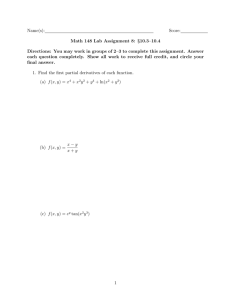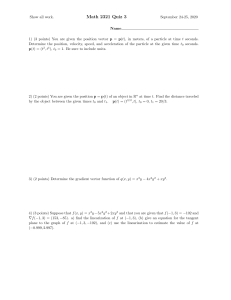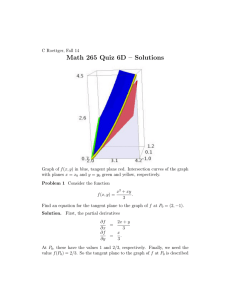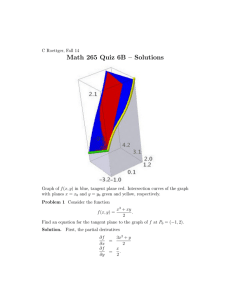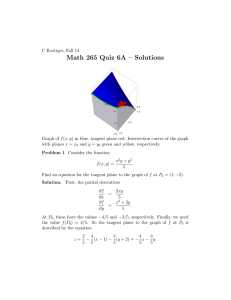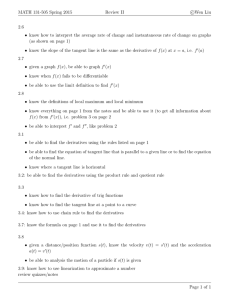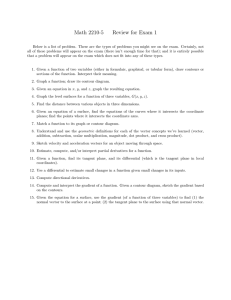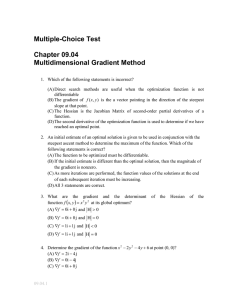Review topics for the Math 200 midterm exam II
advertisement
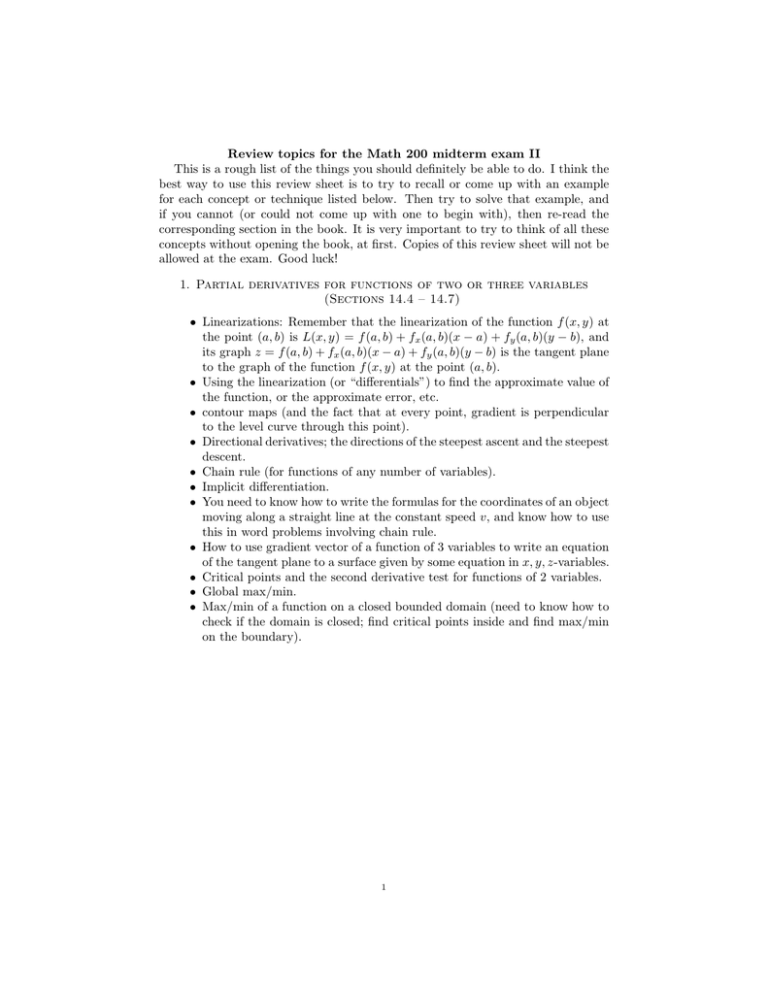
Review topics for the Math 200 midterm exam II This is a rough list of the things you should definitely be able to do. I think the best way to use this review sheet is to try to recall or come up with an example for each concept or technique listed below. Then try to solve that example, and if you cannot (or could not come up with one to begin with), then re-read the corresponding section in the book. It is very important to try to think of all these concepts without opening the book, at first. Copies of this review sheet will not be allowed at the exam. Good luck! 1. Partial derivatives for functions of two or three variables (Sections 14.4 – 14.7) • Linearizations: Remember that the linearization of the function f (x, y) at the point (a, b) is L(x, y) = f (a, b) + fx (a, b)(x − a) + fy (a, b)(y − b), and its graph z = f (a, b) + fx (a, b)(x − a) + fy (a, b)(y − b) is the tangent plane to the graph of the function f (x, y) at the point (a, b). • Using the linearization (or “differentials”) to find the approximate value of the function, or the approximate error, etc. • contour maps (and the fact that at every point, gradient is perpendicular to the level curve through this point). • Directional derivatives; the directions of the steepest ascent and the steepest descent. • Chain rule (for functions of any number of variables). • Implicit differentiation. • You need to know how to write the formulas for the coordinates of an object moving along a straight line at the constant speed v, and know how to use this in word problems involving chain rule. • How to use gradient vector of a function of 3 variables to write an equation of the tangent plane to a surface given by some equation in x, y, z-variables. • Critical points and the second derivative test for functions of 2 variables. • Global max/min. • Max/min of a function on a closed bounded domain (need to know how to check if the domain is closed; find critical points inside and find max/min on the boundary). 1

